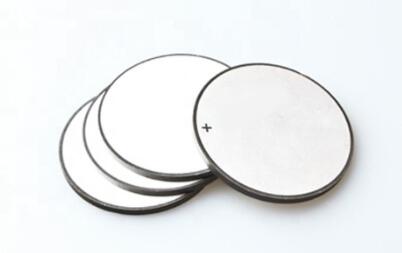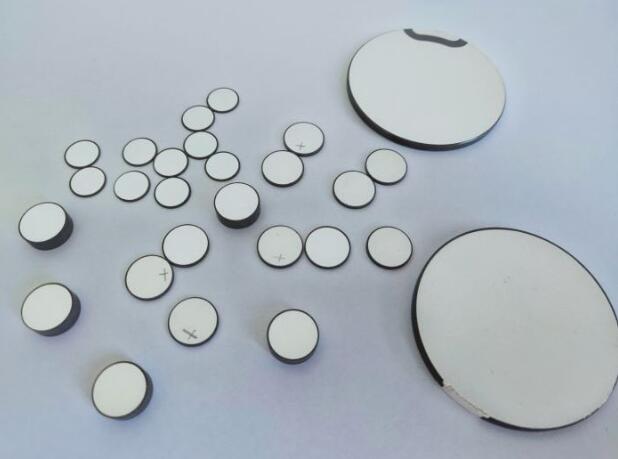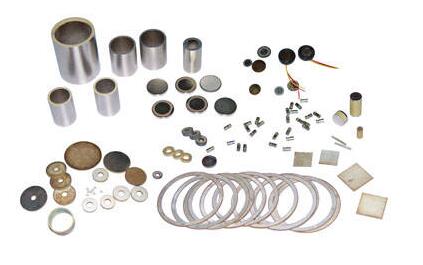2 Piezoelectric Transducers
Piezoelectric transducers utilize the piezoelectric and inverse piezoelectric effects of piezoelectric ceramics to achieve the mutual conversion of electrical and acoustic energy. A piezoelectric ultrasonic transducer is one of them, which is an underwater acoustic device that emits and receives ultrasonic waves. A piezoelectric transducer in water, under the action of sound waves, induces charges at both ends of the transducer, which is called a sound wave receiver; If an alternating electric field is applied to a piezoelectric ceramic sheet, the sheet will sometimes become thinner and thicker, while generating vibration and emitting sound waves, which is called an ultrasonic transmitter. Piezoelectric transducers are also widely used in industry for underwater navigation, ocean exploration, precision measurement, ultrasonic cleaning, solid state inspection, medical imaging, ultrasonic diagnosis, and ultrasonic disease treatment. Another application field of piezoelectric ultrasonic transducers today is telemetry and remote control systems, with specific application examples mainly including piezoelectric ceramic buzzers, piezoelectric igniters, ultrasonic microscopes, etc.
3 Applications in Optoelectronics
Piezoelectric ceramics not only have piezoelectric effects, but also pyroelectric effects, photoelastic effects, and photoelectric effects. The application devices in this area include: light modulators, light valves, electro-optic displays, optical information storage, image storage and display, and electronic multi-color filters. Transparent ferroelectric ceramics (PLZT) are a valuable new type of electronic material that has opened up the development of piezoelectric ceramic materials in electro-optic applications. They have the characteristics of easy processing into various sizes and shapes of products, wide range of controllable composition properties, and low cost.
4 Piezoelectric Drivers
The piezoelectric driver is made of piezoelectric ceramic material lead zirconate titanate (PZT). If single board piezoelectric ceramic PZT is used, a 1cm thick PZT needs to obtain 10 μ A driving displacement of about m requires a voltage of 5KV to be applied at both ends. Applying such a high voltage to PZT may cause insulation breakdown and cause mechanical damage. Because the deformation of piezoelectric ceramics is independent of thickness, a stacked piezoelectric actuator has been developed. Making piezoelectric ceramics into very thin sheets (now capable of producing 0.05mm piezoelectric ceramic sheets), multiple piezoelectric ceramic substrates are mechanically connected in series, electrically connected in parallel, and then sintered together. In this way, applying several hundred volts of voltage to it can result in a significant driving displacement. In applications, flexible hinge structures with small volume, no mechanical friction, no gaps, and high motion sensitivity have also been developed for displacement amplification.
5 Micro Locators
Microlocators are mainly used for positioning control of micrometer and submicron precision, such as the production of optical instruments, fiber docking, high-precision 3D micro motion tables, high-precision machining, and research on tunneling effects. In positioning technology, traditional positioning devices such as rolling or sliding guides, precision spiral wedge mechanisms, turbine concave wheel mechanisms, gear lever mechanisms, and other mechanical transmission micro displacement actuators constitute positioning mechanisms. Due to the presence of large gaps and friction, ultra precision positioning cannot be achieved. The use of piezoelectric actuators combined with flexible hinge amplification mechanisms can overcome the above shortcomings and achieve ultra precision positioning at the micro and nano levels.
6 Ultrasonic Motors
Ultrasonic motor is a new type of motor that relies on piezoelectric ceramic materials as the driver. Under alternating electric fields, ceramics exhibit stretching and contraction phenomena. When a certain type of ultrasonic frequency vibration and fluctuation is excited in an elastic body, the surface of the elastic body relies on friction to push the object in contact with it to move. Usually, various vibration modes need to be converted and combined in order for piezoelectric motors to transform the simple stretching mode of piezoelectric materials into the required driving mode for generating rotational or linear motion.
7 Active Vibration Control
Active vibration control utilizes the intelligent function of piezoelectric ceramics (which can perceive noise signals and emit sound signals with opposite phase and equal intensity to cancel out noise). It is mainly used for noise active control of aircraft, submarines, and military vehicles, and is a very useful high-tech that will play an important role in the future military field.
8 Ultrasound Medical Treatment
The most widely used piezoelectric ultrasound medical device is the B-type ultrasound diagnostic device. This diagnostic device uses an ultrasonic probe made of piezoelectric ceramics, which emits ultrasonic waves that are transmitted within the human body. Various tissues in the body have different reflections and transmissions of ultrasonic waves. The reflected ultrasonic waves are converted into electrical signals by a piezoelectric ceramic receiver and displayed on the screen, allowing for the identification of the position, size, and presence of lesions in various organs. B-type ultrasound diagnostic equipment is usually used to examine visceral lesion tissues (such as tumors, etc.). Piezoelectric ceramics can also be applied in ultrasound therapy. When ultrasound enters the human body and reaches a certain intensity, it can cause a certain part of the tissue to heat up and vibrate slightly, playing a massage and massage role, achieving the purpose of treatment, such as for treating injuries and strain of joints, muscles, and other soft tissues. In addition, ultrasound can also be used to crush stones in the body, such as gallstones, kidney stones, urinary tract stones, etc.













